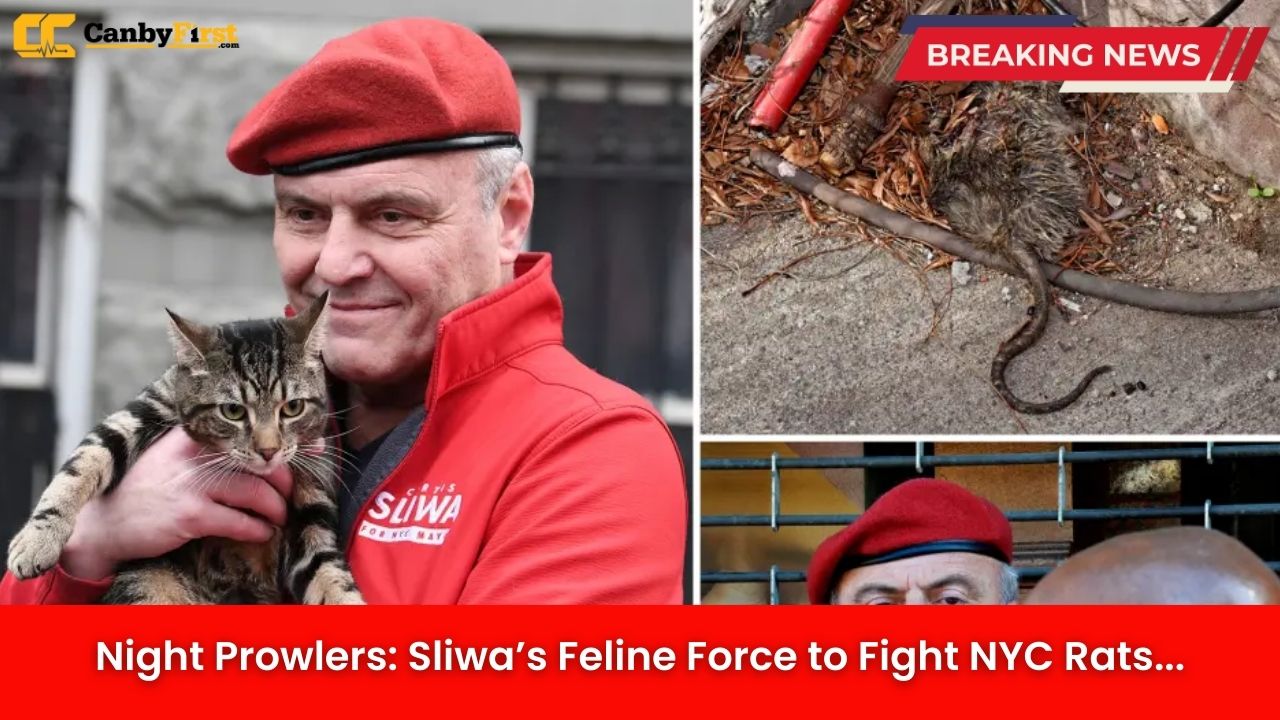New York, US: As the battle against New York City’s burgeoning rat population intensifies, veteran radio host and activist Curtis Sliwa is urging city officials and residents to enlist an unconventional ally: the feral cat. Dubbed “Caped Crusaders at Night,” Sliwa’s initiative calls for organized feral cat “colonies” to strategically patrol neighborhoods where rats run rampant—turning back the rodent tide with feline prowess.
Sliwa, founder of the Guardian Angels and a lifelong advocate for urban safety, argues that a coordinated network of feral cats could serve as a natural, low-cost complement to traditional pest-control measures. “These cats are the original night watchmen,” he said at a recent press conference in midtown Manhattan. “They prowl dark alleys, abandoned lots, and subway tunnels where rats have free rein. It makes sense to harness what nature already provides.”
A Growing Crisis
New York’s rat problem has reached crisis proportions. Reports of rat sightings in subways, parks, restaurants, and even high-rise apartments have spiked in recent years, fueled by warmer winters and an abundance of accessible food waste. While extermination campaigns and sanitation drives have had some success, Sliwa maintains that they only address symptoms, not the root of the problem. “You can poison, trap, and spray, but the rats will always come back if they have unlimited resources,” he said.
Also Read
Sliwa proposes a four-tiered program:
-
Colony Identification
Partner with local animal welfare groups to map existing feral cat colonies in hotspots such as Chinatown, the Lower East Side, and East Harlem. -
Trap-Neuter-Return (TNR) Expansion
Ramp up humane TNR operations to stabilize colony populations and prevent uncontrolled breeding. -
Tactical Deployment
Relocate managed colonies—complete with feeding stations and sheltered “fortresses”—to areas hardest hit by rats, ensuring the cats can establish territories and hunt effectively. -
Community Engagement
Recruit volunteers from block associations and neighborhood watches to monitor colony health, provide supplemental food, and report rat activity.
Humane and Economical
Animal welfare advocates praise Sliwa’s emphasis on humane treatment. Under TNR, cats are spayed or neutered, vaccinated, and ear-tipped for identification before being released. This approach not only curbs overpopulation but also fosters healthier, more effective hunter communities. “When cats are well-fed and vaccinated, they are more likely to patrol and less likely to roam indiscriminately,” noted Dr. Emily Parks, a veterinarian specializing in urban wildlife.
Financially, the plan could offer major savings. Traditional rodent eradication—using chemical baiting, professional exterminators, and repeated cleanups—can cost millions annually across the city’s five boroughs. By contrast, TNR and colony management programs average a fraction of that cost, funded largely through non-profit donations and volunteer labor.
Addressing Concerns
Critics worry about potential downsides: cat overpopulation, disease transmission, and conflicts with local wildlife. Sliwa acknowledges these challenges and insists stringent safeguards are essential. “We’re not talking about unleashing wild hordes of cats everywhere,” he explained. “This is a targeted, science-based strategy with clear oversight. Each colony will have a caretaker team responsible for veterinary checkups, population control, and minimal environmental impact.”
Efforts will include regular health screenings to monitor for feline leukemia, rabies, and other transmissible illnesses. Collaboration with the city’s health department will ensure data collection on both cat and rat populations, enabling continuous assessment.
Community Voices
In Roebling Street, Brooklyn, where rat sightings have become routine, long-time resident Maria Ortiz welcomed the proposal. “I see rats every morning by my stoop, and it’s filthy,” she said. “If having some friendly neighborhood cats helps keep them away, I’m all for it—just as long as someone feeds them.” Similar sentiments echo across Queens and the Bronx, where neighborhood groups are already exploring pilot TNR efforts.
Looking Ahead
Sliwa envisions a citywide network of feral cat brigades patrolling from dusk till dawn—silent guardians restoring balance beneath the neon glow. By blending compassion for stray animals with pragmatic pest control, “Caped Crusaders at Night” aims to transform an age-old predator-prey relationship into a modern tool for urban health.
City Hall has expressed cautious interest. A spokesperson for the Mayor’s Office acknowledged the need for innovative rat-control measures and confirmed ongoing discussions with Parks & Recreation, the Health Department, and local animal welfare organizations.
If Sliwa’s plan gains traction, New York City could pioneer a humane—and decidedly whiskered—solution to its rodent woes. And when twilight falls, the true caped crusaders will slip through shadows on silent paws, ready to answer the city’s midnight call.












